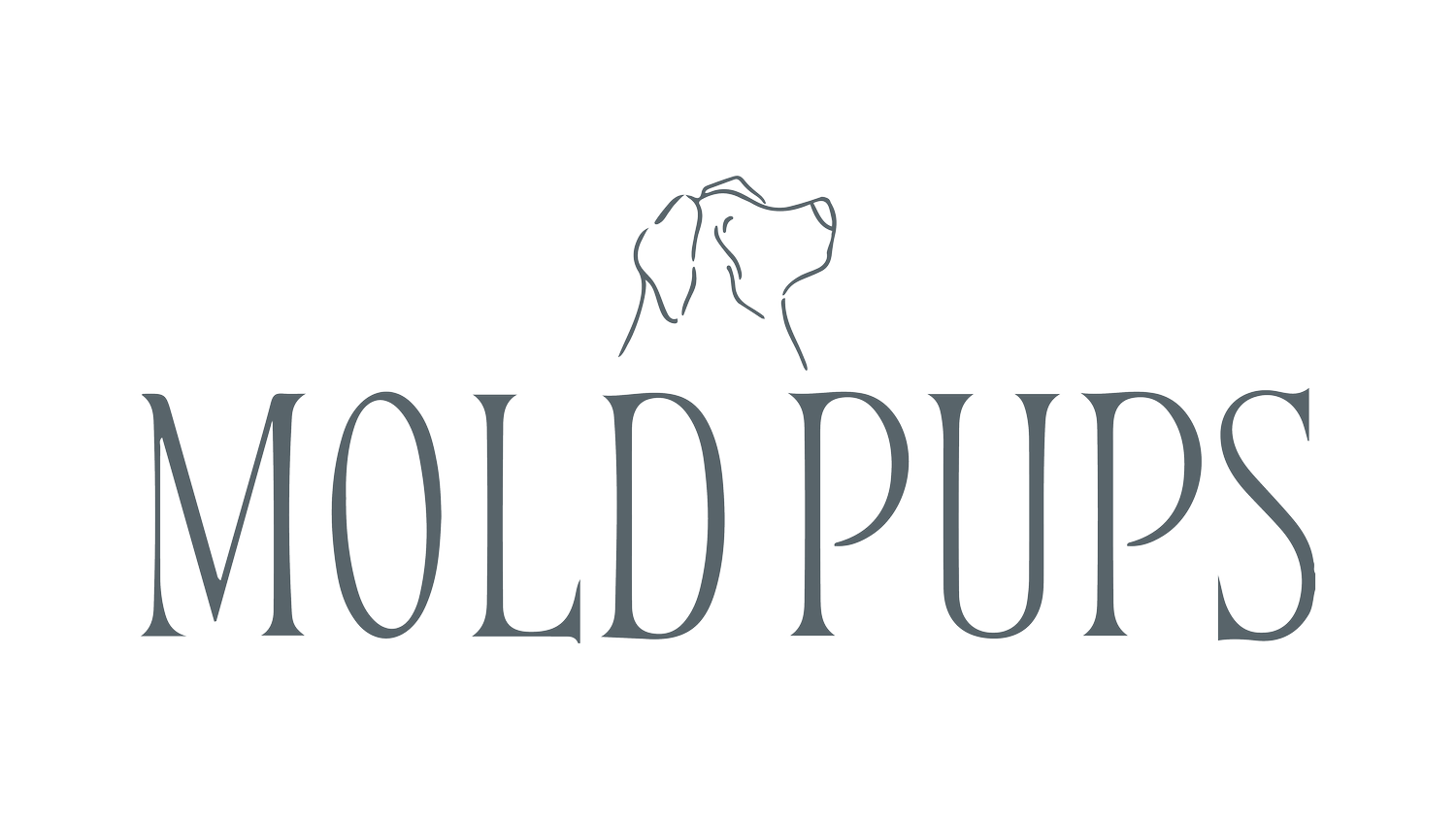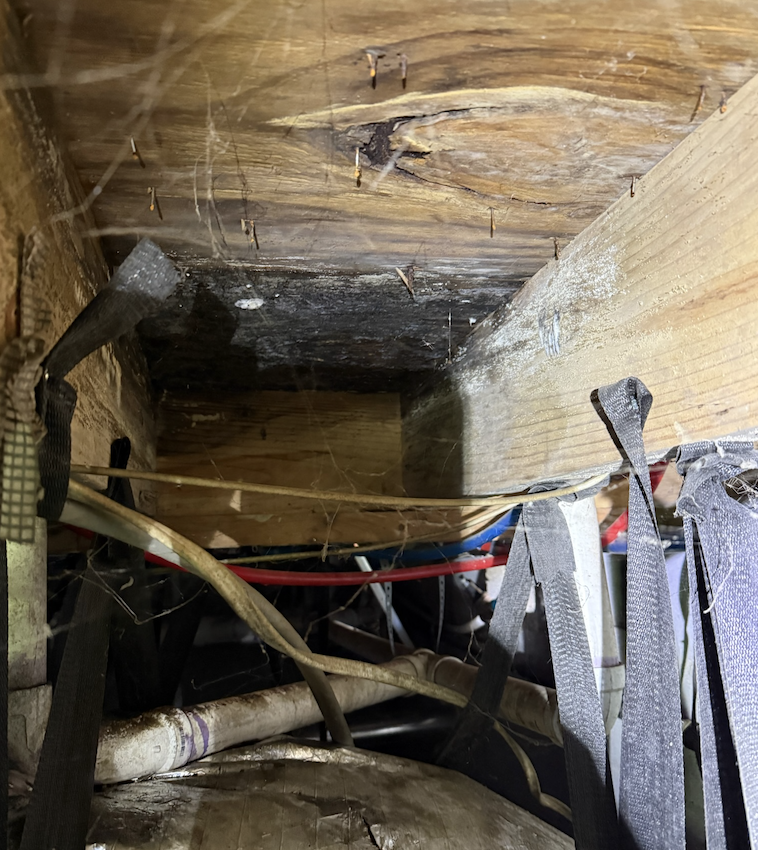10 Common Mold Myths Every Homeowner Needs to Stop Believing
When it comes to mold, there’s a lot of bad information out there. Some advice is outdated, some is oversimplified, and some can even make the problem worse.
We hear about it and see it all the time here in Franklin, Brentwood, and the greater Nashville area—homeowners and contractors who mean well but are following myths they’ve heard for years. When our mold detection dog comes to your house, the mold has often been there much longer than anyone realized.
So let’s set the record straight and clear the air—literally and figuratively—by breaking down 10 of the most common mold myths and what you should know instead.
Myth #1: If you can’t see mold, it’s not there.
Why it’s wrong: Mold is sneaky. It loves dark, damp places you can’t easily see—like behind drywall, under flooring, in crawl spaces, or inside HVAC ducts. By the time visible spots appear, mold may have been spreading for weeks or even months.
What to do instead: Pay attention to other clues, like a musty odor, unexplained allergy symptoms, or ongoing humidity problems. If something feels “off” in your home, it’s worth a deeper look before it becomes a bigger problem.
Myth #2: Bleach kills mold completely.
Why it’s wrong: Bleach can remove mold stains from non-porous surfaces like tile or glass, but it doesn’t work well on porous materials like wood, drywall, or carpet. It may actually push mold spores deeper into the material where they can keep growing.
What to do instead: Address the source of the moisture and use mold-specific cleaners or professional remediation methods. If you’re not sure where the mold is, a targeted inspection can save you from wasting time on ineffective cleaning.
Myth #3: Only old or “dirty” homes get mold.
Why it’s wrong: Mold doesn’t care how old your home is or how clean you keep it. We’ve found mold in luxury properties that look spotless. All it needs is moisture and the right temperature to grow.
What to do instead: Whether your home is 2 years old or 120, make mold prevention part of your regular maintenance—especially after leaks, renovations, or high-humidity seasons.
Myth #4: Black mold is the only dangerous mold.
Why it’s wrong: Black mold (Stachybotrys chartarum) gets the most attention, but many other mold types can cause allergies, respiratory issues, and fatigue. Focusing only on “black mold” could make you overlook other harmful strains.
What to do instead: Treat any mold growth as a concern. The color doesn’t tell the whole story—the location, type, and amount of mold all matter.
Myth #5: A musty smell is just “old house” vibes.
Why it’s wrong: That earthy, damp smell isn’t a normal part of home ownership—it’s often mold releasing microbial volatile organic compounds (MVOCs) into the air. These can be irritating even before visible mold shows up.
What to do instead: If you notice a musty smell, investigate the source instead of masking it with air fresheners or candles. Persistent odors are your home’s way of asking for help.
Myth #6: A negative mold test means you’re in the clear.
Why it’s wrong: Many mold tests only sample air in a small area for a short period of time. Mold spores may not be airborne at that moment, or they may be hiding in areas the test didn’t cover.
What to do instead: Consider inspections that go beyond basic air sampling—like canine mold detection—to check hard-to-reach areas and get a clearer picture of the problem.
Myth #7: Small mold spots are harmless.
Why it’s wrong: A small visible patch could be the tip of the iceberg. Mold often spreads beneath surfaces before becoming visible, so what you see might be just a fraction of the total growth.
What to do instead: Take even small spots seriously, especially in moisture-prone areas like bathrooms, kitchens, basements, and around windows.
Myth #8: Painting over mold solves the problem.
Why it’s wrong: Painting or priming over mold only hides it temporarily. The mold will continue to grow underneath and eventually push through the surface again—sometimes damaging the new finish.
What to do instead: Remove the mold properly, fix the moisture source, then repair and repaint. Skipping those first steps is like putting a bandage on a broken bone.
Myth #9: Mold problems always mean costly demolition.
Why it’s wrong: While some severe cases require major repairs, accurate detection can help you target only the affected areas, saving both time and money.
What to do instead: Use precise inspection methods, like canine mold detection, to pinpoint where the mold is before you start tearing things apart.
Myth #10: If no one’s sick, there’s no mold problem.
Why it’s wrong: Mold impacts people differently. One family member might have obvious symptoms, while others feel fine. Waiting until everyone notices symptoms can allow the mold to spread unchecked.
What to do instead: Pay attention to early signs—even subtle ones—and address them before they escalate into a bigger health or home repair issue.




